Technology transfer
As a world leading synchrotron, the ESRF has developed unique technologies and equipment that makes it one of the most productive synchrotrons worldwide. The ESRF believes that these innovations which are used daily for its own user programmes, should also be of benefit to other institutes and industry.
Selected developments and technologies are available directly from the ESRF or under a licence as a technology transfer to industry.
Our technology transfer policy
- Promotes the use of ESRF technologies to benefit society through licensing to companies who turn them into successful commercial products.
- Supports the innovative goal of the ESRF by generating licensing income which is recycled to our user and development programmes, and contributes to the recognition of the inventors.
- Develops partnerships with local and international industrial networks.
For more information, contact us.
OUR IN-HOUSE PRODUCTION
Crystal analysers
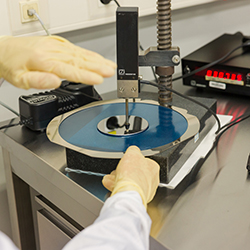 |
Crystal Analysers are optical devices for X-rays consisting of a thin single-crystal wafer bonded onto a shaped glass surface. The adhesion is performed with epoxy glue or by anodic bonding and the wafers are principally made from Si or Ge. Through a combination of Bragg diffraction and focusing, these crystals permit very precise measurement of X-ray energies for spectroscopic applications. More information - Crystal Analyser lab - Contact us |
Scintillators
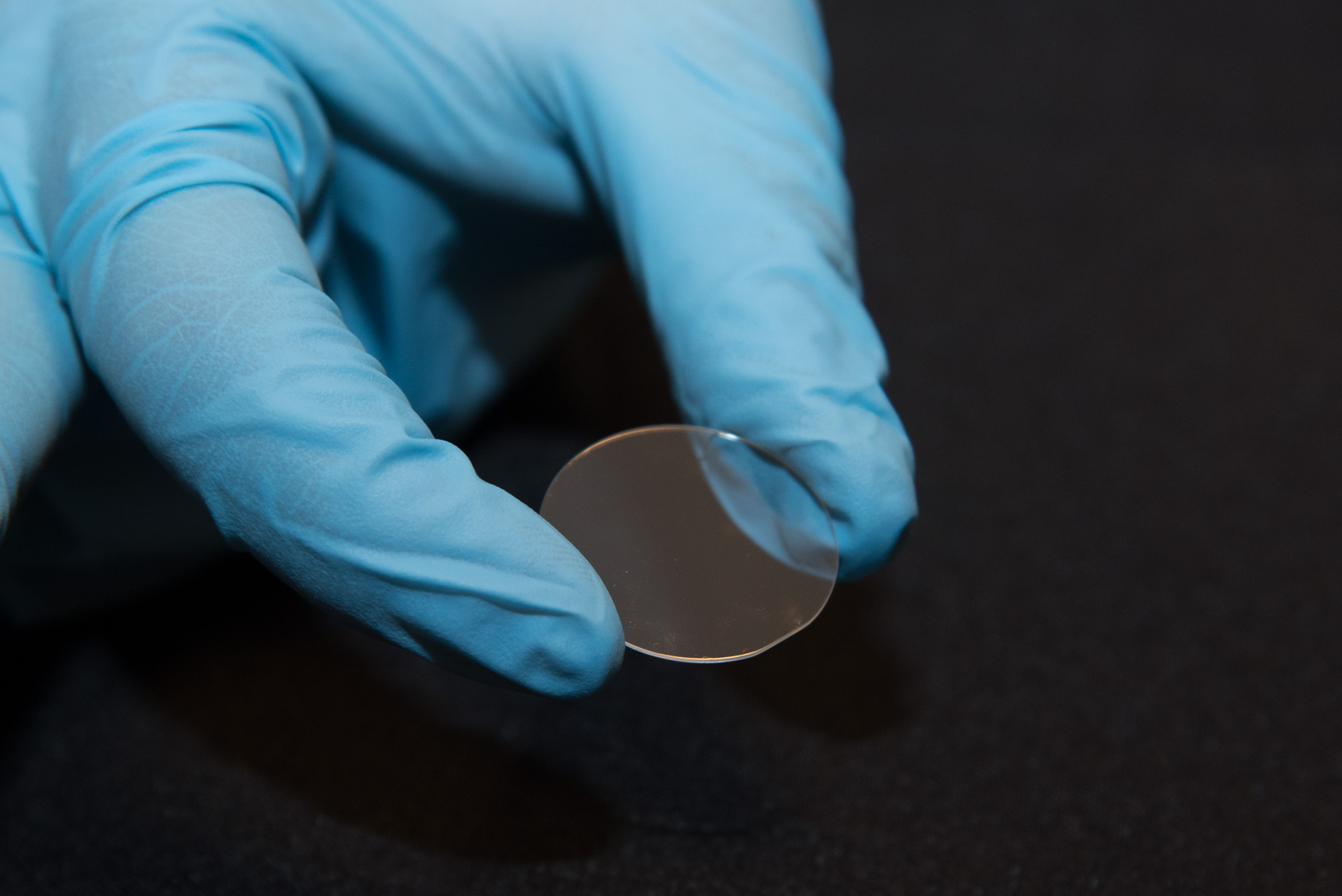 |
Inorganic crystals also called scintillators are widely used on synchrotron beamlines to convert X-rays into visible light. Thin film layer growth requires several advanced techniques: sputtering, chemical solution deposition, liquid phase epitaxy (LPE), laser ablation, etc. LPE technique was chosen due to its high reproducibility, simplicity and homogeneity. ESRF manufactures essentially 3 types of scintillators at LPE. More information - Liquid phase epitaxy facility - Contact us |
MUSST
|
|
The NIM module ‘MUSST’ was designed at ESRF to produce trigger patterns enabling synchronization with external events (usually used to synchronize several components of a beamline). Its design allows to adapt the output trigger signals to any specific need of a particular experiment (events can be chained in order to produce specific trigger sequences). |
V2F converter
 |
V2F100 is a linear voltage to frequency converter used on beam monitoring . It was developed at the ESRF to operate with a full scale output frequency of 100MHz which extends the usability of voltage to frequency conversion (VFC) to applications requiring millisecond and sub-millisecond data integration intervals. This device is commercially available direct from Quantum Detectors. |
IcePAP - intelligent motor control system
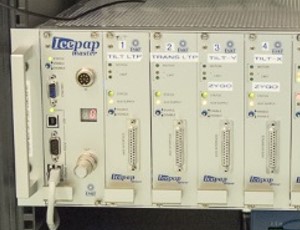 |
IcePAP is a motor control system developed at the ESRF and optimised for high-resolution position applications. The emphasis has been put on covering most of the requirements of synchrotron radiation experiments at the ESRF beamlines. |
Dynaflow Cryostat
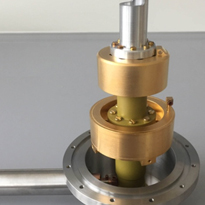 |
The Dynaflow Cryostat was designed at the ESRF to provide efficient sample cooling at very low temperatures (down to 2.5K). Unlike other cryostats where the sample is cooled in contact with a cold plate, the sample is positioned directly in the helium flow for enhanced cooling. More information. |
MAXIPIX detector
 |
MAXIPIX (Multichip Assembly for X-ray Imaging based on a photon counting pixel array) is an in-house developed detector exploiting the Medipix2 readout chip. It was developed in order to meet the growing needs of ESRF beamlines for fast and/or noise-free X-ray area detectors with small pixels, in particular in XPCS, microSAXS, inelastic scattering and surface diffraction. More information |
Magnetic measuring bench
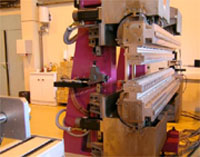 |
The Insertion Device field measurement systems developed at the ESRF incorporate 18 years of experience. More than 100 devices (undulators, wigglers, helical undulators, in-vacuum undulators) have been successfully processed with accurate and fast measuring systems. |
Miniature ionisation chamber
|
A small windowless ionisation chamber was developed for monitoring and correcting the intensity of an incoming microbeam. Kocsis M. and Somogyi A. - "Miniature ionization chamber detector" - Journal of Synchrotron Radiation - Vol.10 - pp.187-190 - 2003. |
2D gas detector
Technical information (pdf 59.5kb)
If you require details, please contact us.
OUR PATENTS
RF fingers
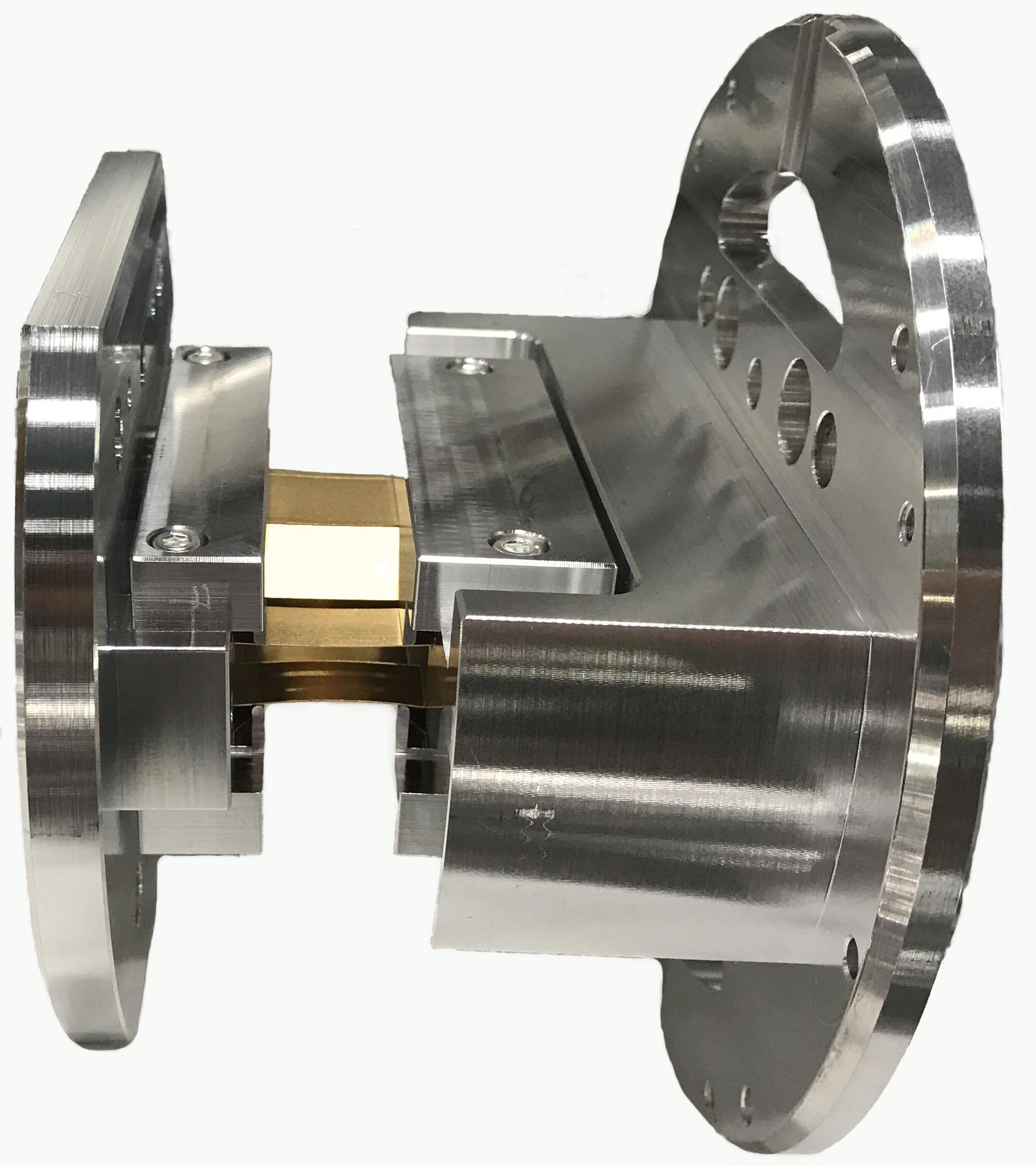 |
The ESRF-EBS storage ring features new vacuum chamber profiles with reduced aperture. Radio frequency (RF) fingers are a key component to ensure good vacuum conditions and reach the best possible machine performance. A more compact, more robust and more reliable design has been produced for the new storage ring. More information here. |
OUR LICENCES
Beamline Instrumentation
X-BPM sensors and ionisation chamber beam position monitors
Licensed to Danfysik
Sagittal benders
Licensed to FMB Oxford Ltd
Licensed to Bruker Advanced Supercon GmbH
Bimorphe variable curvature mirrors
Licensed to Horiba Scientific
Mirror benders
Licensed to IRELEC
2 KB optical systems for focusing X-ray beam
Licensed to IRELEC
Monochromators Using Diamond Crystals
Licensed to CINEL
High Precision miniature X-ray Slits
Licensed to JJ X-Ray
X-ray CCD and software for beamline alignment
Licensed to SESO
Hexapod and precision jacks
Licensed to Ateliers Peyronnard
APD counter systems
Licensed to Cyberstar S.A.
Wide-beam mechanical chopper
Licensed to MAATEL
Cooled UHV compatible refractive lens
Licensed to JJ X-Ray
Flow reactor for X-ray studies
Licensed to Leiden Probe Microscopy
Storage Ring Instrumentation
Permanent magnet based insertion devices
Licensed to Danfysik
Licensed to Bruker Advanced Supercon GmbH
Control and Data Analysis
PCI cards
Licensed to SECAD
Detectors
Detector interconnection systems
Licensed to Canberra Eurisys
Components for gas filled detectors with fast parallel readout
Licensed to Bruker AXS




